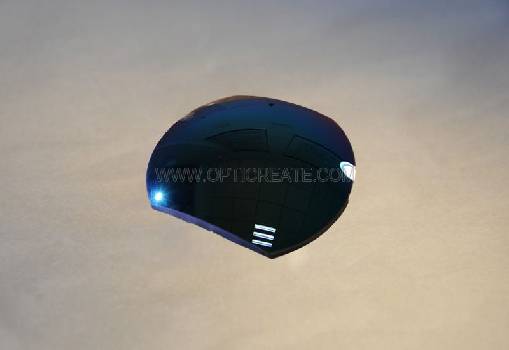What is a spherical lens? What is an aspheric lens? What is the difference between the two? So follow up with the Infrared Optical Lens Supplier today.
The so-called spherical surface and aspherical surface mainly refer to the lens geometry of lenses (lenses of various cameras and microscopes) and glasses (including contact lenses), namely spherical lenses and aspherical lenses. The difference in geometry between the two determines their difference in the direction of refraction of the parallel incident light, which affects the quality of their imaging effects.
Spherical lens, the lens has a spherical curvature, and its cross-section is also curved. When light of different wavelengths enters the lens at different positions after being parallel to the optical axis, it cannot be focused into a point on the film plane (the plane that is perpendicular to the lens center and the lens focal line and passes the focus), which forms aberration Problems that affect the quality of the image, such as the loss of clarity and distortion. Ordinary ordinary lenses are composed of spherical lenses. To solve this imaging problem, it is possible to correct the aberration by adding a lens in the lens body, but this action may cause adverse effects and further weaken the image quality, because the additional lens, in addition to increasing the reflection of light in the lens body In addition to the chance of causing glare, it will also increase the size and weight of the lens.

IR ASPHERICAL LENS
For aspherical lenses, the lens is not spherically curved, but the edge of the lens is "cut" a little, and its cross section is flat. When the light is incident on the aspheric mirror, the light can be focused on a point, that is, on the film plane, to eliminate various aberrations. For example, the phenomenon of flare in spherical lenses using a large aperture will be more serious than shooting in a fine aperture, but if an aspheric lens is added, the flare can be greatly reduced; for example, the image is distorted (pillow or barrel), because the lens The light is generated without proper refraction. Taking the zoom lens as an example, the barrel shape is usually deformed when the focal length is short and the pillow shape is deformed when zooming to the long focal length. If an aspheric lens is used, this aberration can be improved.
The use of aspherical mirror technology is most beneficial to the production of lenses with large apertures, high magnification zooms, and even extreme wide angles and telephotos. The image quality is improved due to the reduction of aberrations, and the lens body size is also reduced. At present, many lens manufacturers on the market have stated that some of their focal length lenses use aspherical lenses, and even portable zoom cameras (such as 28 to 90mm, 38 to 105mm, etc.) use aspheric lens design to improve image quality.
The surface curvature of aspherical lens is aspherical design. The advantage of this design compared to spherical design lens is that the aspherical lens after special coating treatment has more perfect visual performance, showing clearer and more comfortable visual effect. After wearing the aspherical lens, you can hardly feel its existence, it will lose weight for your eyes, and enjoy the ease it brings to you. The aspheric design is more natural, with less visual distortion and more realistic vision.
Customized Aspherical Lens and cylindrical lenses, please contact our Aspherical Lens Supplier.
Previous: JX6418 Drone camera lens 1.47mm 720p M7 F/No 2.7mm Φ4.8mm
Next: None.
Copyright:@2020-2021
Comments Please sign in or sign up to post.
0
0 of 500 characters used